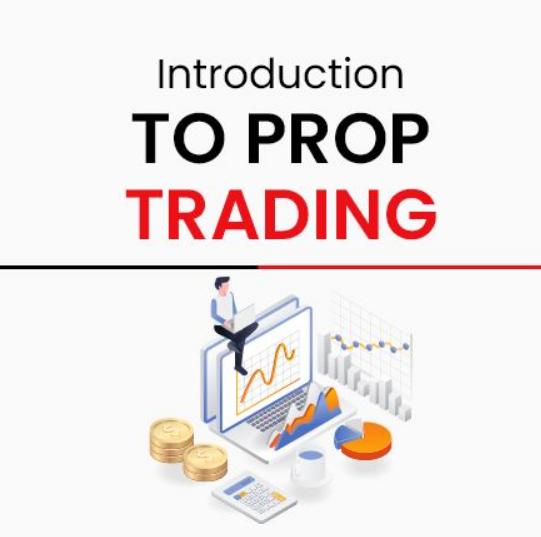Introduction: Embracing AI in Prop Trading
Prop trading continues to evolve as technological innovations reshape market strategies. Amid rising market complexities and shifting regulatory requirements, sophisticated AI platforms have emerged as vital tools for modern prop trading. In this article, we delve into the top 4 open-source AI platforms – including DeepSeek and TradeGPT – helping prop traders automate backtesting, optimize risk management, and ultimately improve trading performance. This expert guide is designed for junior traders to institutional decision makers, providing actionable insights into advanced backtesting methodologies and AI-powered strategy enhancements.
The image above illustrates a sample backtesting dashboard interface, crucial for quickly assessing strategy performance and risk metrics in prop trading.
Overview of Top Open-Source AI Platforms Benefiting Prop Traders
In today’s competitive markets, prop trading firms leverage AI to run automated backtests, optimize parameter selections, and generate comprehensive performance reports. This section compares four widely recognized open-source AI platforms that are revolutionizing the prop trading space.
DeepSeek AI
Backtesting Features: DeepSeek uses vectorized backtesting combined with event-driven simulation to effectively measure the impact of commissions and slippage. It also supports automated parameter optimization, enabling rapid scenario analysis.
Data & Integration: With access to deep historical datasets covering multiple asset classes, DeepSeek facilitates real-time data feed integration via robust APIs. It seamlessly integrates with popular platforms like TradingView and MetaTrader 5.
Pricing & Use Case: DeepSeek offers tiered pricing including a free trial option for smaller trading desks, scaling well for both retail traders and prop firms requiring team collaboration and compliance checks.
TradeGPT
Backtesting & Automation: TradeGPT leverages natural language processing to automate strategy generation and backtesting. Its advanced reporting tools provide comprehensive stress tests and scenario analyses.
Data Quality & Integration: TradeGPT offers high-quality historical data with extended coverage across multiple markets, and it integrates directly with broker APIs and software such as NinjaTrader and QuantConnect.
Pricing & Use Case: Its flexible pricing model caters to both individual prop traders and institutional setups, with collaborative features designed for team-based strategy development and risk management.
QuantConnect
Backtesting: Known for its cloud-based event-driven backtesting engine, QuantConnect handles complex simulations and optimizes trading algorithms while taking transaction costs into account.
Data & Integration: The platform provides extensive historical data sets and integrates with Interactive Brokers and other leading brokers. It also features API support for custom analytics.
Pricing & Use Case: Offering both free and tiered plans, QuantConnect is ideal for data-driven quants and institutional prop trading teams seeking comprehensive analysis tools.
Backtrader
Backtesting Flexibility: Backtrader is renowned for its robust Python-based framework that supports both vectorized and event-driven backtesting, incorporating automated parameter sweeps and performance metrics like Sharpe ratios and maximum drawdowns.
Data Quality & Integration: Despite being open-source, Backtrader can be linked with premium data providers and popular broker APIs for live trading and paper trading setups.
Pricing & Use Case: Free to use, making it an attractive option for individual skilled traders and smaller prop trading teams looking to adapt quickly without significant overhead costs.
Advanced Backtesting Strategies: Best Practices for Prop Traders
Backtesting is a critical component of any prop trader’s strategy development. However, pitfalls such as overfitting, survivorship bias, and look-ahead bias can distort results. Here are several expert techniques for mitigating these risks:
Common Pitfalls and Mitigation
- Overfitting: Avoid excessive model tuning on historical data. Use walk-forward optimization to confirm the robustness of your strategies.
- Survivorship Bias: Integrate comprehensive datasets that include delisted securities and corporate actions to ensure your backtesting metrics are realistic.
- Data Snooping: Validate results with out-of-sample testing and maintain a conservative approach to parameter adjustments.
Walk-Forward Optimization vs. Traditional Backtesting
Walk-forward analysis runs multiple iterations of parameter optimization in rolling time windows. This process more accurately simulates live market conditions compared to static, traditional backtesting. Prop traders benefit from this dynamic approach by identifying strategies that maintain consistency over changing market cycles.
Real-World Case Study: Enhancing Trading Strategies with AI
A distinguished prop trading firm recently integrated DeepSeek AI to overhaul its strategy development process. They initially faced challenges such as data noise and inconsistent strategy performance due to market unpredictability. By employing DeepSeek’s vectorized backtesting and automated parameter optimization, the firm was able to test numerous scenarios effectively.
Results: Through rigorous out-of-sample testing and walk-forward analysis, the firm reported improvements in the Sharpe ratio by 20% and reduced maximum drawdown by 15%. This case exemplifies how AI tools can bridge the gap between theoretical models and real-market performance.
Integrating Forward Testing and Risk Management
While backtesting is essential, its true value is realized only when integrated with forward testing (paper trading) to validate strategy performance under live conditions. Here’s a recommended approach:
Forward Testing Framework
After backtesting, deploy strategies in simulated environments using platforms like MetaTrader 5 or NinjaTrader. Monitor key performance indicators (KPIs) such as profit factor, drawdown, and risk-adjusted returns. This step helps refine strategy parameters before live deployment and reduces the risk exposure in real trading scenarios.
Risk Management and Regulatory Compliance
Modern prop trading requires judicious risk management. Firms should adopt disciplined risk frameworks aligned with regulatory requirements (e.g., MiFID II, ESMA, NFA rules). Tools like TradeGPT provide built-in risk analytics for continuous monitoring, while comprehensive checklists ensure strategies meet compliance standards. Implement stress tests and scenario analysis to prepare for market downturns.
Practical Guide to Automating Backtesting with Code
For those inclined towards coding, integrating automated backtesting in Python using Backtrader can be a game-changer. Below is a sample Python code snippet demonstrating basic backtesting logic:
import backtrader as bt
class TestStrategy(bt.Strategy):
def __init__(self):
self.dataclose = self.datas[0].close
def next(self):
if not self.position and self.dataclose[0] < self.dataclose[-1]:
self.buy()
elif self.position and self.dataclose[0] > self.dataclose[-1]:
self.sell()
cerebro = bt.Cerebro()
cerebro.addstrategy(TestStrategy)
data = bt.feeds.YahooFinanceData(dataname='AAPL', fromdate=datetime(2020, 1, 1), todate=datetime(2021, 1, 1))
cerebro.adddata(data)
result = cerebro.run()
cerebro.plot()
This example highlights how traders can swiftly test their hypotheses and adjust parameters in a controlled environment, bridging theory with real-world market execution.
The above chart from TradeGPT exemplifies a detailed backtesting report, showcasing key metrics such as drawdown, Sharpe Ratio, and optimal parameter analysis.
Internal Resources and Further Reading
For more detailed insights on managing backtesting pitfalls and transitioning to live trading, check out our related articles:
Conclusion: Your Next Steps in Prop Trading Excellence
Adopting state-of-the-art open-source AI platforms like DeepSeek and TradeGPT can dramatically enhance your prop trading strategies. Whether optimizing backtests through automated parameter sweeps or integrating robust risk management tutorials into your trading workflows, the tools outlined herein offer practical pathways to elevated trading performance. As of October 2023, these platforms deliver not only effective backtesting capabilities but also ongoing support for regulatory compliance and team collaboration.
For a comprehensive checklist on risk management and backtesting best practices, download our detailed Risk Management Checklist below, and join our upcoming webinar on integrating AI into your prop trading strategies.
Pro Tip: Always combine out-of-sample testing with forward testing to prepare for unexpected market movements. Ensuring robust data quality and cross-verifying strategies with multiple AI tools can make the difference between success and costly missteps in prop trading.







